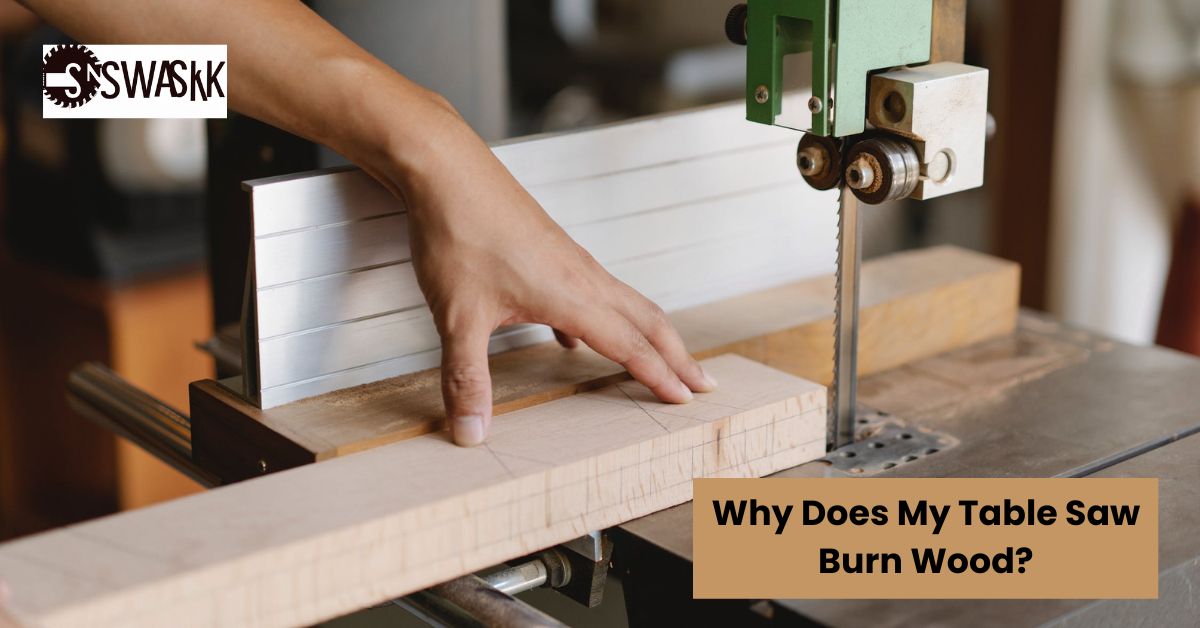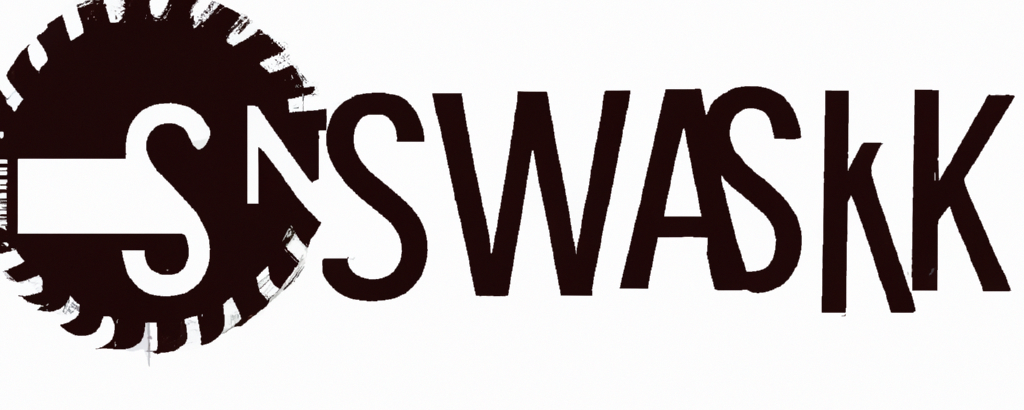Why does my Table Saw burn wood?

If you are working with a table saw that burns the wood a little by the side, this is not uncommon to encounter. Working on any electric power saw can cause such frustrating issues.
The common reasons for a table saw that burns wood while cutting is due to using the wrong blade and dirty blade or a too slow feed rate. When cutting the wood, friction is created between the wood and the blades, which causes heat, resulting in wood burning.
This problem is easy to solve, and you don’t have to worry about that.
In this article, I will cover all the reasons for this issue and solutions to avoid this problem. So, continue reading to keep your table saw from burning out the wood.
Why Table Saw Burns Wood: Top 5 Reason
Using a dull or dirty blade
If your saw blade is dull, you cannot cut as fast as sharp ones. A dull blade causes friction while cutting any material with a saw as it heats up quickly.
A dirty blade can also produce friction that becomes responsible for heating and then burns the wood. These problems account for almost all Woodburn.
Using a bent or warped blade
When a saw blade is overheated, the blade becomes bent or warped. This problem can cause wobbles. Which burns the wood by rubbing it off in the wrong way.
Using the wrong blade
If you are using the wrong blade while cutting wood or other material, you may face different problems. Using a table or any other power saw requires a suitable blade for cutting different materials. That’s why using the wrong blade causes burn marks on the wood.
The feed rate is too slow.
For different types of materials, you need different speeds of the saw blade. Some wood types, like cherry or soft maple, are more susceptible to burning, so you need to feed faster to cut the wood.
Many times, this problem occurs with beginners. However, slow feed speed creates smoother cuts but also burns the wood. The slow feed rate allows the spinning blade to contact the wood for too long, which creates friction between the wood and blade and, in return, scorched burn marks.
Misaligned
If any part of your table saw is out of alignment, like the fence, the splitter, the miter slot, or the blade itself, it creates more pressure and produces friction with wood. It burns especially on one side of the wood, even a little bit.
How to avoid wood from burning by table saw?
Cut along the edge.
When you are cutting wood, make sure to cut along the edge first, not the corner. After cutting the edges, you can cut the corner, called climb cutting. It will help in smoother and clean cutting.
If the wood is cut into a corner at first, then it causes burn marks on the wood.
Burn the scrap
A scrap is a piece of wood or any other material that remains after the manufacturing or construction. So, I recommend using scrap first while cutting. If there’s any burning, it will happen on the scrap, not your actual project.
Once you cut the scrap, then move to cut your actual project. It will help you to prevent burn marks on your final project.
Make small cuts
When cutting the wood, try to make several small cuts, each removing just a little bit of material (no more than ⅛ inch at a time).
This way, you can move the tool at normal speed, and ultimately, the cut will be smoother.
Use the right blade for the task.
While cutting, it is more important to use the appropriate blade for the task. Using the wrong blade can take away to burn the wood.
Do research before installing the blade to your saw for cutting wood or any other material.
Keep the splitter straight.
Make sure the metal piece behind the blade is straight. If not, it could push the wood into the blade and cause it to burn. To fix this, use washers or thin pieces of metal to adjust the metal piece so that the metal piece is straight and matches up with the blade.
Use feather boards
Featherboards are orange clamps attached on the side and top of the material to keep the wood in a stable position. You will not be worried about holding it down with your hands. This way, you can concentrate on moving the wood quickly and avoid getting burn marks.
How to recover the burn marks?
You don’t have to worry if the wood is burned accidentally. Just sand the burn marks away to fix this issue, or use tools like a wood planer or a flat scraper.
However, check if your saw functions work properly. If the saw has some problem, you must fix it first. Burn marks can happen when the saw isn’t working properly. So, take care of your saw first!
Final thoughts
While working on a table saw project, burn marks on wood can often be caused by a dull or dirty blade. Low feed speed, leading to increased contact between the blade and the wood, can also significantly contribute to burn marks.
Furthermore, misalignment issues between the blade and fence and using an inappropriate blade for the task can result in burning the wood.
To avoid wood-burning issues with a table saw, it is crucial to choose the right blade for the specific task and to prioritize cutting along the edges rather than corners. Additionally, making smaller cuts prevents burn marks on the wood.
FAQs
1. How do I know if my table saw blade is dull?
First of all, it will look dull. Secondly, your cut will not be clean and will take more effort. Lastly, the less precise it is, the more likely it is to cause wood to burn.
When you are working with a table saw, you will realize that, at some point, you are pushing much harder force than normal. Additionally, you will notice more burning effects on wood.
2. Which way do you push wood through a table saw?
The blade of the table saw spins towards the operator. So, you have to be always feeding wood into it. To push wood safely through a table saw, you need to control the wood where the kickback will occur. So, in this case, ensure to use a good push stick with a fence.
3. What could cause a fire in your table saw?
Spending too much time spinning against the wood or feeding the wood through the blade too slowly causes the saw to catch fire. It can be tricky to determine the feed rate, especially if you are a beginner. Maintaining a steady feed rate can prevent fire and injuries.
